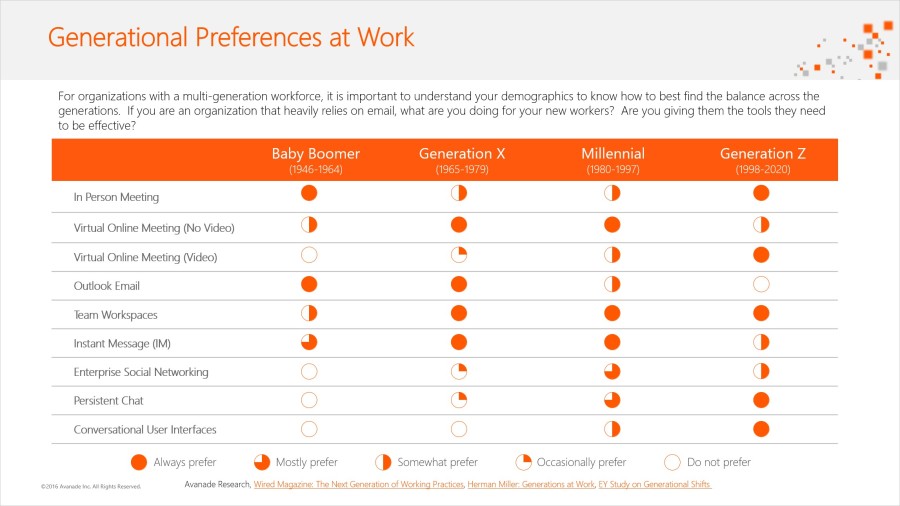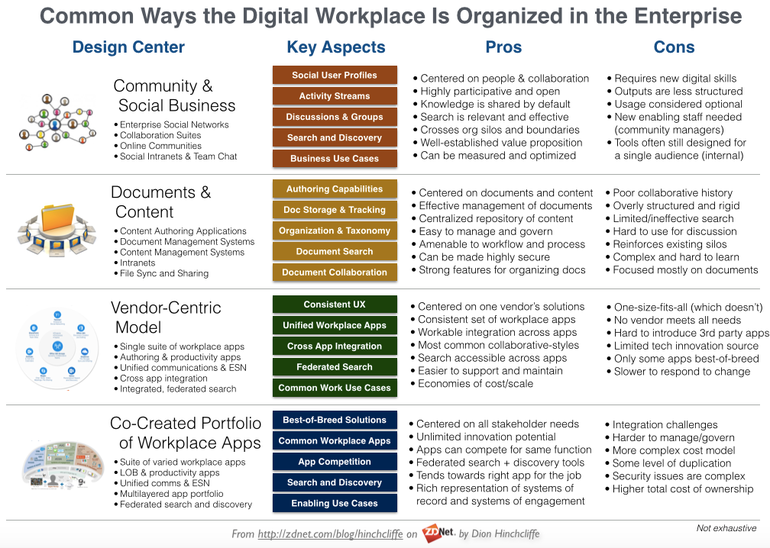The obvious question is: Why the corporate social network lacks the participation and lively zest found in consumer social media systems? And what can be done about it?
Source: Learning from HBR: Making corporate social network collaboration successful – Work Monkey Labs
Interesting thoughts on the lack of adoption of Collaboration software and Enterprise Social Networks. I do agree with a lot of the thoughts, but I believe there are important reasons for failure, or better a low adoption rate.
We are throwing new tools over the fence and expect, the users are happy about it and are immediately using the new applications. Surprise, they don’t. Why?
We don’t explain and train the users in a sufficient manner. My personal experience is that people do not experience automatically the benefits of the Collaboration tools. We need much more intensive hand-holding, leading and explaining by example, why simultaneous editing documents online (instead of downloading) or sharing by a Social Network is better than sending attachments. I am not talking about the one-off video course. It is continuous hand-holding and coaching.
Sending attachments by email … My favorite example, why Collaboration tools fail (and I have written about it). People are used to attach documents and they don’t change their habit. Changing habits and persistence is in my opinion one of the most serious challenges fighting adoption of collaboration tools.
And we have to face another challenge:
Charlene Li, thorough her research, says that the Leadership of the organization is the single most important factor in driving engagement of corporate social network in big organizations across the globe. If the leaders don’t see anything in it worth their time, employees won’t either.
Source: Learning from HBR: Making corporate social network collaboration successful – Work Monkey Labs
I don’t believe it is only leadership, Command and Control and hierarchical structures. It is still a common habit that people hold their knowledge. Not only leaders, not only middle management, of course the normal worker is holding information as a lot of studies proof.
And I am not sure, if the normal workers are getting the more or less fine difference between „old“ knowledge management and „new“ expertise sharing:
Managing knowledge the old way has gone. Employees have known and have experienced that managing knowledge repositories in databases is cumbersome, time consuming and has not helped them much. Now it is expertise sharing. Expertise sharing finds its rightful place in corporate social networks.
Source: Learning from HBR: Making corporate social network collaboration successful – Work Monkey Labs
And yes, let us technology providers not steal out of responsibility. We have to deliver much more user-friendly tools and experiences. We – at least most of the vendors I know – are still far away from a great user experience and ease of use. And of course we are facing the challenge of different working styles and need to get the Email generation, the Facebook-generation and the WhatsApp-generation work together as seamless as possible.
Let me close this post with a create quote from the post of Ramkumar Yaragarla stressing the importance of culture in the workplace:
Where there is trust and reciprocity, there is meaningful collaboration and corporate social networks can flourish.
Source: Learning from HBR: Making corporate social network collaboration successful – Work Monkey Labs
Einsortiert unter:English Tagged: Change Management, Collaboration, featured, Innovation, SchlauerArbeiten, Workplace-of-the-Future


